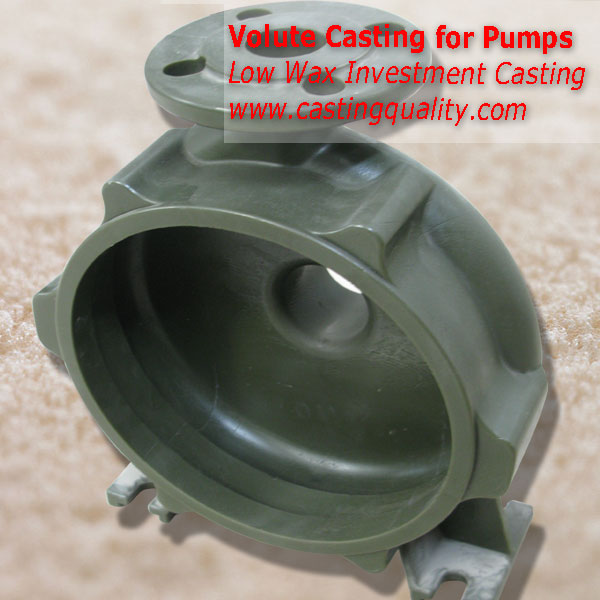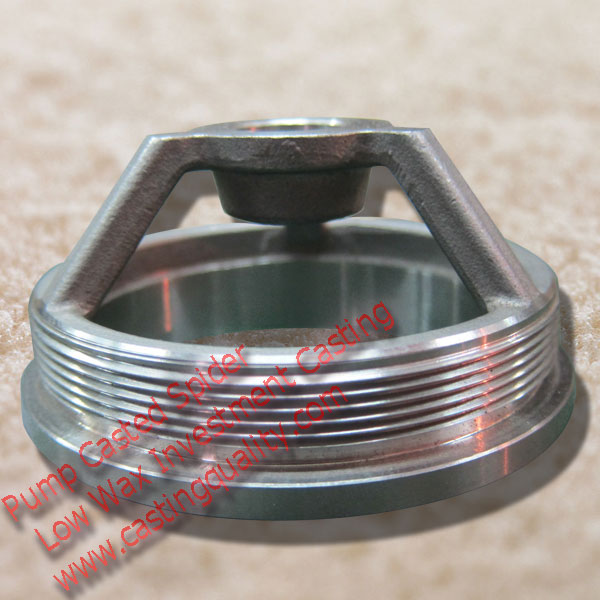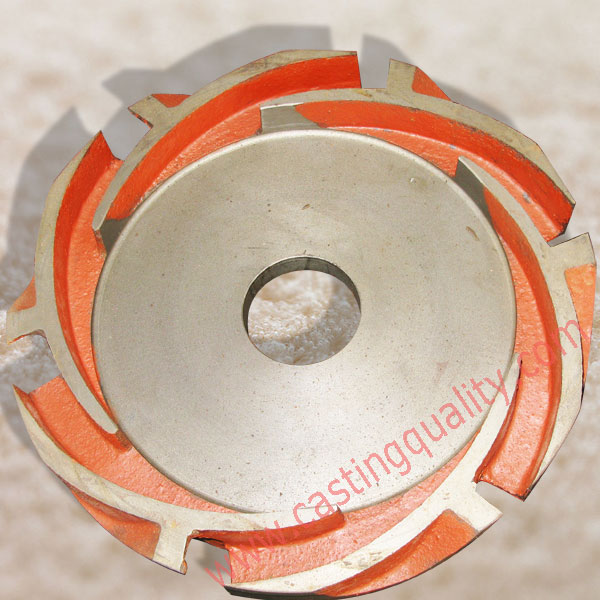Metal Casting: Austenitic Stainless Steel Casting
Casting Description: Pump Casing Casting.
Austenitic Stainless Steel include: stainless steel CF8M, stainless steel SS316, stainless steel CF8, stainless steel 304, stainless steel 304L(CF3), stainless steel steel 316L (CF3M)
Casting Process: Precision Lost Wax Investment Casting, or Sstainless Steel Sand Sasting process.
Casting Tolerance: ISO 8062 CT5-CT7 for investment casting, CT10 for stainless steel sand casting process.
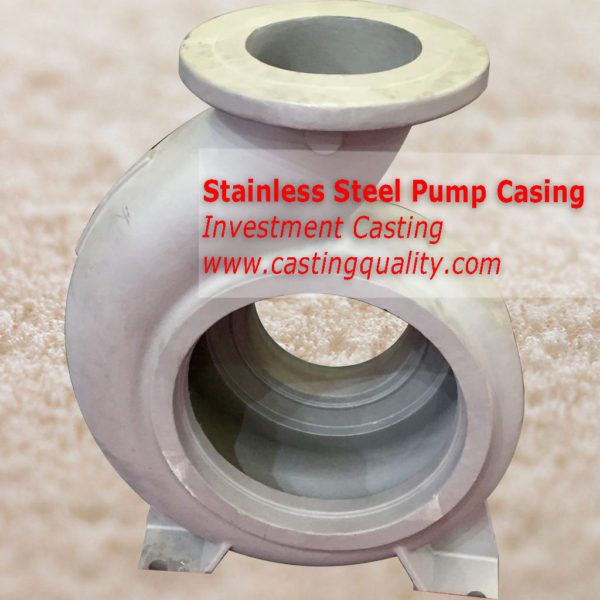
Austenitic Stainless Steel Casting-Pump Casing
Austenitic stainless steels are the most widely used, and while most are designated in the 300 series, some of the highly alloyed grades, though austenitic, have other identifying grade designations, e.g., alloy 20, 904L, and the 6 percent molybdenum grades. These latter are often known by their proprietary designation. These stainless steel grades are available in virtually all wrought product forms, and many are employed as castings. Some austenitic grades in which manganese and nitrogen are substituted partially for nickel are also designated in the 200 series. Types 304 (18 Cr, 8 Ni) and 316 (17 Cr, 10 Ni, 2Mo) are the workhorse grades, and they are utilized for a broad range of equipment and structures. Austenitic grades can be hardened by cold work but not by heat treatment; cold work increases strength with an accompanying decrease in ductility. They provide excellent corrosion resistance, respond very well to forming operations, and are readily welded. When fully annealed, they are not magnetic, but may become slightly magnetic when cold-worked. Compared to carbon steel, they have higher coefficients of thermal expansion and lower thermal conductivities. When austenitic grades are employed to resist corrosion, their performance may vary over a wide range, depending on the particular corrosive media encountered. As a general rule, increased levels of chromium, molybdenum, and nitrogen result in increased resistance to pitting and crevice corrosion in chloride environments. Type 304 is routinely used for atmospheric corrosion resistance and to handle lowchloride potable water. At the other end of the spectrum are the 6% Mo austenitic stainless steels, which have accumulated many years of service experience handling seawater in utility steam condensers and in piping systems on offshore oil and gas platforms. Highly alloyed austenitic stainless steels are subject to precipitation reactions in the range of 1,500 to 1,800°F (815 to 980°C), resulting in a reduction of their corrosion.
The casting material will follow those casting standards:
ASTM A351 Standard Specification for Castings, Austenitic, for Pressure-Containing Parts:
ASTM 743A Standard Specification for Castings, Iron-Chromium, Iron-Chromium-Nickel, Corrosion Resistant, for General Application
ASTM A240 Standard Specification for Chromium and Chromium-Nickel Stainless Steel Plate, Sheet, and Strip for Pressure Vessels and for General Applications
ASTM A182: Standard Specification for Forged or Rolled Alloy and Stainless Steel Pipe Flanges, Forged Fittings, and Valves and Parts for High-Temperature Service
ASTM A276: Standard Specification for Stainless Steel Bars and ShapesWW.CASTINGQUALITY.COM
Our Services
- Sand Casting
Casting Quality focus on Metal Parts industry, we provide professional service in Metal Casting field.
Sand Casting is a popular metal form method, are suitable for all materiel, such as grey iron, ductile iron, malleable iron, carbon steel, stainless steel, aluminum and bronze.
also named as precision lost wax casting, mainly suitalbe for carbon steel and stainless steel parts. We also provide grey iron and ductile iron and aluminum and bronze parts by investment casting. It can achieve the best appearance with good tolerance
- Shell Casting
Shell casting method is a good option to replace investment casting and sand casting. the quality is better than sand casting parts, suitable for bulk production.
- CNC Machining
CNC Milling, CNC turning with 5 xix CNC center, we provide precision machining for all castings based on customers design drawings.
- CAD Design
Mechanical Design service based on customers requirement, our software is Solidworks and AutoCAD.
- Tools/Mold Design
Mould design and production will be served for metal casting ad plastic injection industry. Based on our more than 10 years experience, we supply professional molds for our customers in Europe and North American.
| Casting Grade | CHEMICAL COMPOSITION % | MECHANICAL PROPERTIES | ||||||||||||||||
| C % | Si % | Mn % | P % | S % | Cr % | Ni % | Mo % | Cu % | V % | OTHERS | BRINELL HARDNESS | TENSILE STRENGTH MPA | YIELD STRENGTH 0.2% offset MPA | ELONGATION in 2 inch. % | REDUCTION OFAREA,MIN% | IMPACT Kv min J(-20℃) | ||
| 1 | ||||||||||||||||||
| ASTM A743 CF8M | MIN | – | – | – | – | – | 18.000 | 9.000 | 2.000 | – | – | – | – | 485 | 205 | 30 | – | – |
| MAX | 0.080 | 2.000 | 1.500 | 0.040 | 0.040 | 21.000 | 11.000 | 3.000 | – | – | – | – | – | – | – | – | ||
| ASTM A351 CF8M | MIN | – | – | – | – | – | 18.000 | 9.000 | 2.000 | – | – | – | – | 485 | 205 | 30 | – | – |
| MAX | 0.080 | 1.500 | 1.500 | 0.040 | 0.040 | 21.000 | 12.000 | 3.000 | – | – | – | – | – | – | – | – | ||
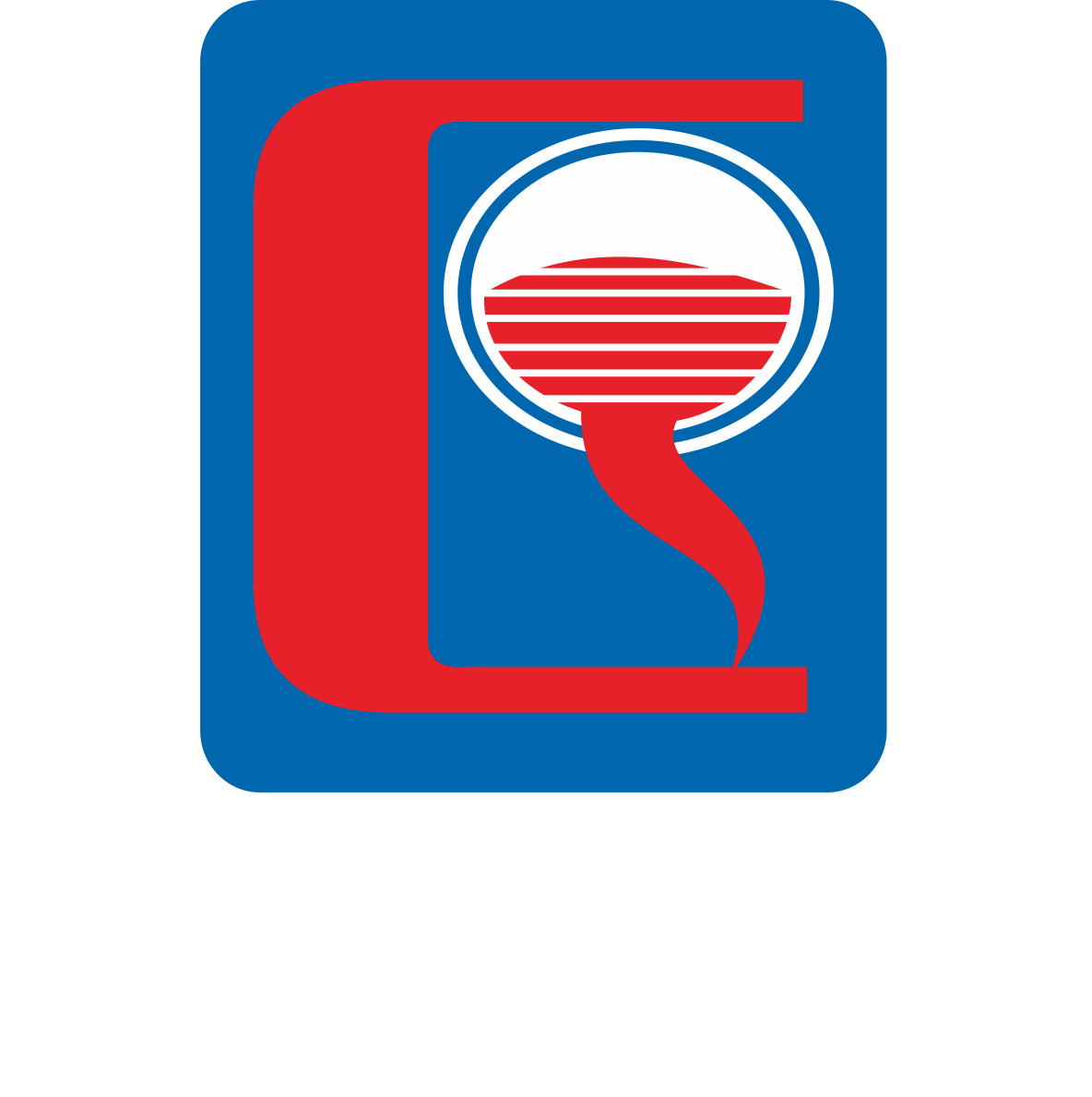
 PDF VIEW
PDF VIEW



